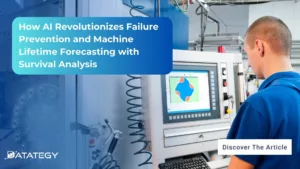Why AIOps Is Key to Cyber Threat Detection in Defense?...
Read MoreMaximizing the Benefits of AI: papAI Solution Integration in Clinical Workflow
Table of Contents
ToggleBy enhancing clinical workflow, artificial intelligence (AI) has the potential to change the healthcare industry by improving patient outcomes and increasing the productivity of healthcare staff. Predictive analytics, natural language processing, and machine learning algorithms are used. According to a survey by Optum, 77% of healthcare executives believe that AI is necessary to transform their organization’s clinical workflows.

AI has the potential to streamline time-consuming administrative processes, assist in diagnostic decision-making and improve the coordination of patient care. This reduces the workload of clinicians and allows them to focus on providing high-quality care. AI can thus facilitate clinical workflow, improving the effectiveness, efficiency, and diagnosis of healthcare delivery. In this article, we will look at how AI is being applied to improve patient care by improving clinical workflow.
What does "Clinical Workflow" mean in this context?
The sequence of actions and activities required in delivering healthcare to patients, from initial evaluation through treatment and follow-up, is referred to as the “clinical workflow.”
Clinical workflow refers to all the procedures used by medical professionals to identify, manage, and treat patients as well as the associated administrative labour and paperwork. Scheduling patient visits, performing medical examinations, ordering tests and procedures, interpreting test findings, prescribing medications, and coordinating care with other healthcare practitioners are a few examples of clinical workflow tasks.
The delivery of improved patient outcomes and increased levels of satisfaction among patients and healthcare professionals may be achieved by healthcare organisations through enhancing clinical workflow.
AI Application in the Clinical Workflow
The applications of AI in the clinical workflow are numerous: it can automate tedious administrative tasks, help with diagnostic decisions and improve the coordination of patient care.
Administrative Tasks
Clinical process requires administrative tasks, but they can be time-consuming and error-prone. By increasing the accuracy and efficiency of administrative operations, AI allows healthcare personnel to devote more time to patient care. A study published in the Journal of the American Medical Informatics Association found that using an AI-powered chatbot for appointment scheduling led to a 77% reduction in no-show rates and a 38% reduction in appointment cancellations.
One area where AI is having a significant influence is scheduling appointments. Patients may book appointments with the assistance of chatbots and virtual assistants powered by AI, relieving the front desk staff’s workload and allowing them to focus on more difficult duties. The procedure is more practical and user-friendly since patients may make appointments, check for availability, and get reminders via voice or text instructions.
Another area where AI is having an impact is patient data input. Healthcare workers invest a lot of time entering patient information into electronic health records (EHRs). Yet, this procedure can be laborious and error-prone. AI-powered solutions can help physicians in reliably and swiftly entering patient data into EHRs, lowering mistakes and boosting productivity. For instance, patient narratives may be used to extract data using natural language processing (NLP) techniques, eliminating the requirement for manual data entry.
Diagnostic Decision-Making
Using machine learning algorithms is one method AI is enhancing diagnostic judgement. These algorithms can examine a lot of patient data, including test results and medical imaging, to find patterns and provide precise diagnoses. For instance, AI-powered technologies can assist radiologists in spotting anomalies in diagnostic pictures like X-rays and MRI scans, lowering the possibility of making an incorrect diagnosis and enhancing patient outcomes.
Diagnostic testing are becoming more accurate and swift thanks to AI. AI-powered systems, for illustration, may analyse data from blood tests and other diagnostic procedures to spot possible health hazards and offer early illness diagnosis for conditions like cancer. This may result in early intervention and better patient outcomes.
Finally, An AI-powered diagnostic system was able to diagnose breast cancer from mammography scans with an accuracy of 94.5%, compared to a human radiologist’s accuracy of 88.4%, according to a study published in The Lancet Digital Health.
Patient Monitoring
Another area where AI is enhancing clinical workflow is in patient monitoring. AI-powered patient monitoring devices can continually track a patient’s vital indicators including heart rate, blood pressure, and oxygen saturation levels and deliver real-time data. In order to detect changes in a patient’s state and warn professionals of possible issues, this data may be examined, enabling early intervention and better patient outcomes.
By automating routine tasks like obtaining vital signs and documenting patient data, AI-powered patient monitoring devices can also lessen the strain of healthcare professionals. This frees up professionals to concentrate on harder duties like making diagnoses and giving care.
AI-powered remote patient monitoring (RPM), in addition to in-facility patient monitoring, has become a crucial tool in the healthcare industry. RPM systems employ tech, including wearables and mobile applications, to keep track of patients who aren’t really present in a medical facility. Patients with chronic diseases or those who reside in remote or rural locations may find this to be very helpful.
How AI impacts clinical decision making
healthcare is a strategic field for artificial intelligence. It is characterized by the complexity of the data to be analyzed, the large number of variables to be taken into account and the importance of accurate diagnoses to reduce medical errors and improve the quality of care.
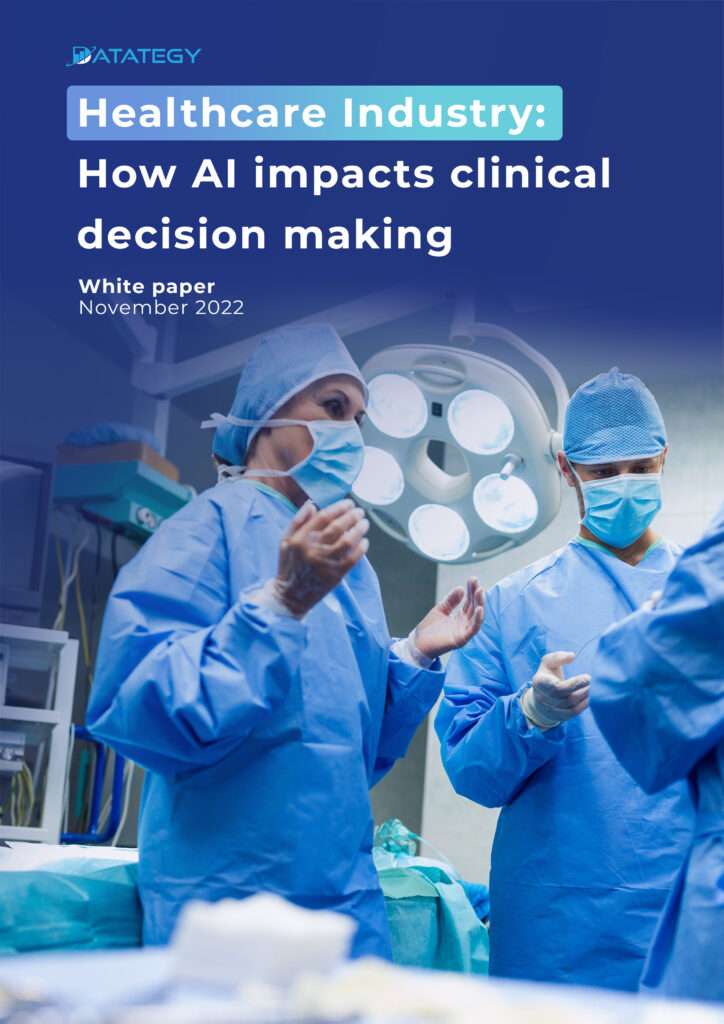
Benefits of Integrating Artificial Intelligence (AI) into the Clinical Workflow
Patient's benefit
Reduction in missed or misdiagnosis and therefore a reduction in the likelihood of unnecessary surgery or procedures.
Less time waiting get the diagnosis and results faster.
A better patient experience and more trust and personalization in the healthcare system.
Physicians's benefit
Improve diagnostic accuracy and be confident in the decision making.
Reduce bias and standardize sample review therefore democratizing care.
Save time and increase availability time with the patient.
Reduce mental load thanks to AI assistance on repetitive and time-consuming tasks.
Use Case: Integrating papAI Solution in Clinical Workflow
In this use case, we explored “Covid-19 ICU Admission prediction” in order to ascertain the advantages of using the papAI Solution in the clinical workflow. As you are aware, physicians and other healthcare professionals generally need access to user-friendly and intuitive interfaces in order to comprehend the data they deal with and the conclusions drawn from its analysis. Introducing papAI, our approach to integrating explainable AI into the healthcare business. With our platform, you can build any DS process that suits your needs.
1 - Importing and storing the Data
1 - Importing and storing the Data
We need to collect data sets from many sources before we analyze it. With the help of papAI’s numerous connections, you can easily import data into object type buckets from your local computer, other databases, or APIs without any limitations on size or format for usage in your project.
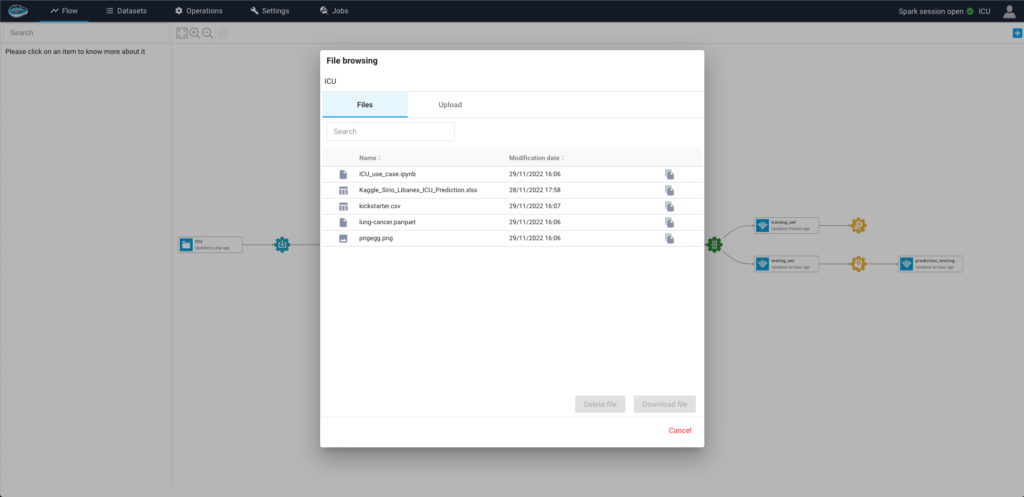
2 - Exploring the Data
2 - Exploring the Data
You can also explore your data before assessing the preprocessing steps of your imported datasets through our integrated statistics and data visualization modules; you can then explore more in-depth your data through different displays.
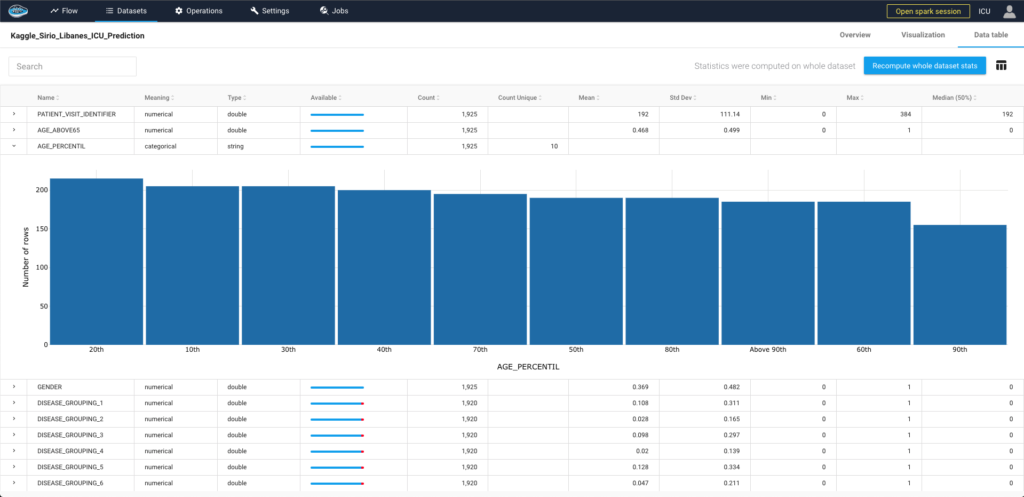
3 - Cleaning the Data
3 - Cleaning the Data
Going into the cleaning step of the dataset, you can either use our cleaning module for regular operations such as filling null values or the Python script for more complex operations to preprocess your data and get it ready for the model training.
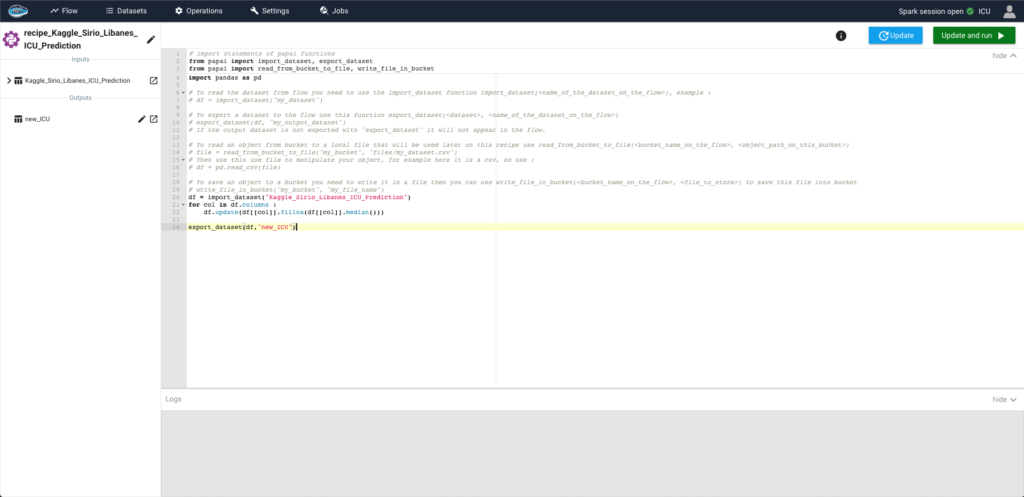
4 - Training the Data
4 - Training the Data
Following the cleaning step, your dataset is ready for training any ML model. Thanks to our AutoML module, you can simply create multiple experiments of models from built-in modulable ML algorithms and through simple clicks. You can build your own pipeline to create the best model possible with no-code capabilities, which is useful for practicians or non data experts.
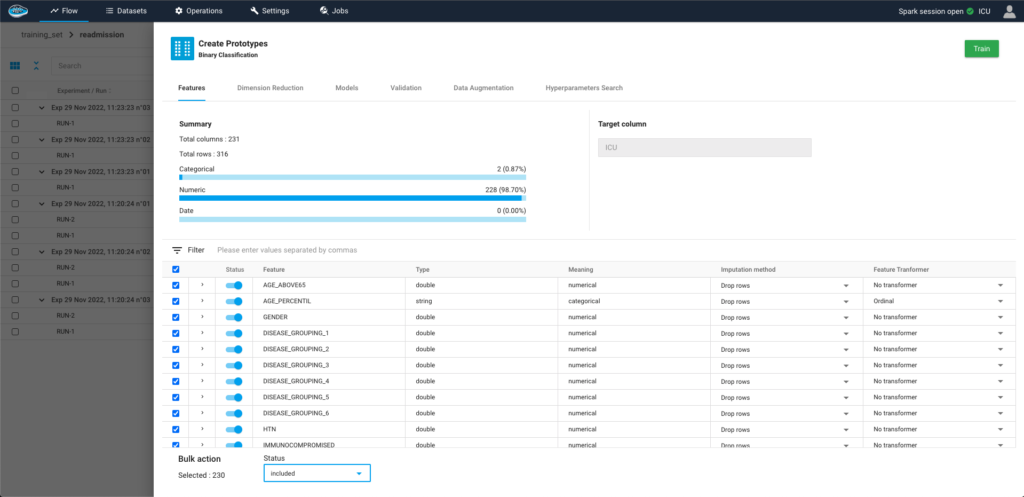
5 - Analyse and understand the model
5 - Analyse and understand the model
In order to assess the quality of the trained model, papAI integrates an explainability module for each experiment created to be able to evaluate how much the model’s prediction is accurate and if it’s able to predict both classes. In our case: if a patient needs an admission in ICU or not. To get more in-depth with the decision making of that same model, papAI introduces an interpretability module to analyse how each feature weights on the prediction made by the model and how the variation of the feature value impacts on the target probability. This allows users to understand clearly the behind-the-scenes and thus eliminate the black box effect of these models.
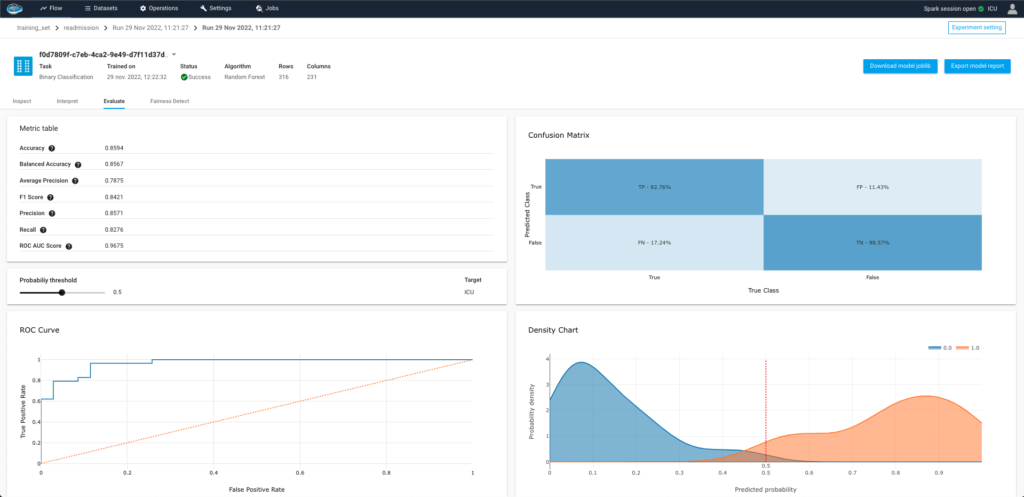
6 - Predict on the testing set
6 - Predict on the testing set
When the best suited model is chosen, you can apply it on a testing set to predict the outcome of admitting a patient or not to the ICU. You can also explore the influence of each feature on the prediction on an individual level and create “what-if” cases to assess the risk factors for each patient.
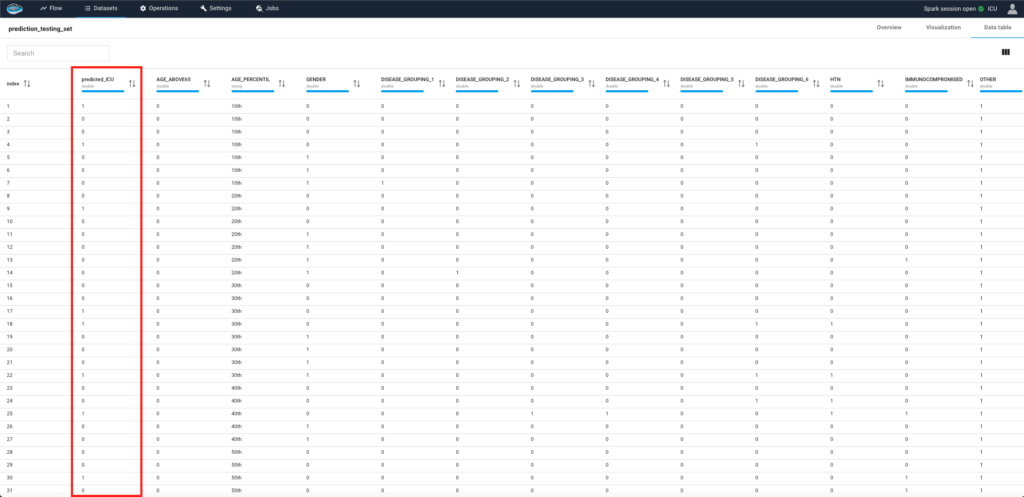
Create your own AI-based clinical workflow optimization tool using the papAI Solution
In conclusion, AI has the potential to transform clinical workflow and improve patient outcomes by automating routine tasks, assisting in diagnostic decision-making, providing clinical decision support, and improving patient monitoring. By leveraging the power of AI, healthcare providers can improve efficiency, reduce errors, and ultimately provide better care to their patients.
If you’re interested in building your own AI-based clinical workflow tool, consider using papAI, a platform that allows you to create custom AI models without needing a background in data science. With papAI, you can train your own AI models on clinical data to perform tasks such as image recognition, natural language processing, and predictive modeling. By harnessing the power of AI, you can improve your clinical workflow and provide better care to your patients.
Interested in discovering papAI?
Our commercial team is at your disposal for any questions.
How AI Transforms Predictive Maintenance in Defense Equipment
How AI Transforms Predictive Maintenance in Defense Equipment In a...
Read MoreHow to Scale AI Without Breaking Your Infrastructure in 2025
How to Scale AI Without Breaking Your Infrastructure in 2025...
Read More“DATATEGY EARLY CAREERS PROGRAM” With Noé Vartanian
“DATATEGY EARLY CAREERS PROGRAM” With Noé Vartanian Hello all, my...
Read More
